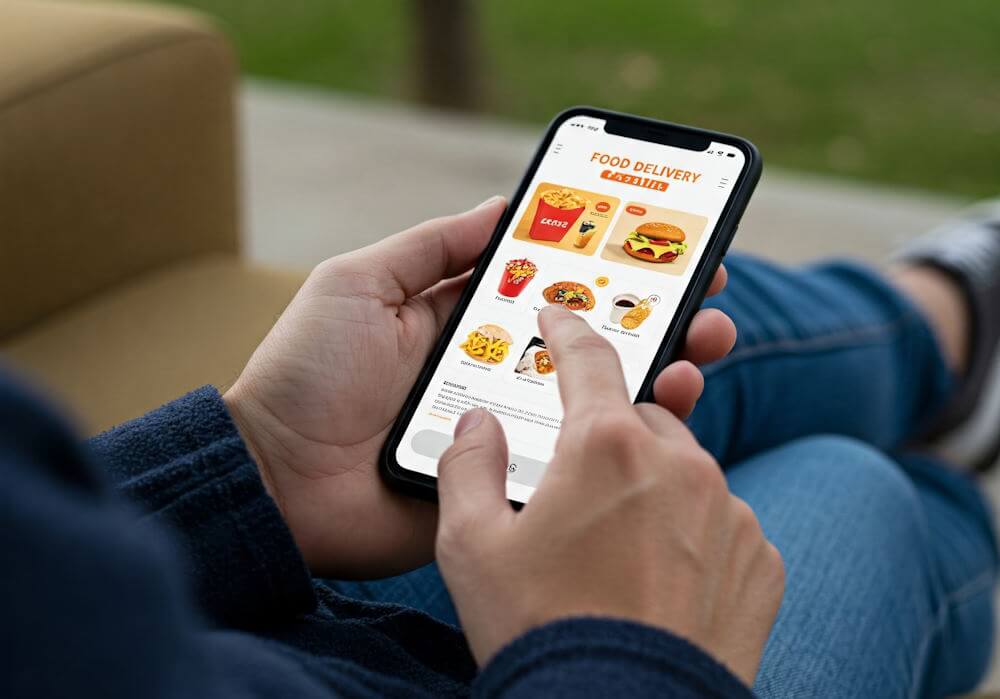The convenience of food delivery has significantly transformed consumer behavior in recent years. Two primary models have emerged to cater to this demand: subscription services and pay-per-order systems. Each of these food delivery models offers distinct advantages and appeals to different customer preferences, creating a competitive landscape in the restaurant and food service industry.
Subscription services typically require customers to pay a recurring fee to access a set range of food options delivered regularly. This model has gained traction among busy individuals and families looking for convenience, predictable budgeting, and an array of culinary choices. Subscribers may find value in the regular deliveries, which can simplify meal planning and reduce the stress associated with daily dining decisions. Many subscription services curate menus tailored to dietary preferences, enhancing their appeal in a market that increasingly prioritizes personalized experiences.
On the other hand, pay-per-order systems allow consumers to pay each time they place an order, providing more flexibility. This model caters to those who prefer spontaneity and may not wish to commit to a regular delivery arrangement. Customers can order meals as they desire, experimenting with various restaurants and cuisines without the obligations associated with a subscription. This approach can be particularly advantageous for consumers who prioritize variety and want to only indulge in food delivery occasionally.
The rising popularity of both models can be attributed to the changing dynamics of consumer lifestyles and preferences. As more individuals seek to balance their time and convenience with culinary exploration, understanding the cost implications and operational differences between these food delivery models becomes essential. This article will delve into the advantages and disadvantages of both the subscription and pay-per-order systems, providing insights into which model may ultimately save consumers more money.
Understanding Subscription Services
Subscription services in the food delivery industry have gained significant popularity due to their convenience and potential savings. These services operate on a model where customers pay a recurring fee, often monthly, to receive regular meal deliveries. Typically, subscribers sign up for a plan that outlines the frequency of deliveries, choosing from options such as daily, weekly, or bi-weekly. This structure ensures that customers have ready access to meals and can plan their dining experiences accordingly.
One of the primary advantages of subscription services is the cost-efficiency they can offer. Subscribers often enjoy discounts on meals compared to standard pricing, which can lead to substantial savings over time. Additionally, delivery fees may be waived or reduced for subscribers, further enhancing the appeal of this model. Exclusive offers such as access to premium meals, limited-time selections, or first dibs on new menu items are other benefits commonly associated with subscription services.
Several prominent companies have established themselves in the subscription food delivery space. For instance, services like Blue Apron and HelloFresh provide subscribers with pre-portioned ingredients and recipes, allowing them to prepare meals at home while enjoying the convenience of meal planning. Similarly, services such as DoorDash and Uber Eats have introduced subscription models that enable users to enjoy reduced delivery fees and exclusive deals on various restaurants.
Typically, customers who opt for subscription services include busy professionals, families looking for easy meal solutions, and health-conscious individuals who appreciate planned meal options. This customer base values the time saved and the predictability that subscriptions provide, allowing them to manage their food preparation with minimal hassle. Overall, understanding the intricacies of subscription services can help consumers make informed decisions regarding their food delivery options.
Exploring Pay-Per-Order Systems
The pay-per-order model in food delivery services operates on a straightforward premise: consumers pay for each individual order they place, allowing them to receive food without any long-term commitment. This approach contrasts sharply with subscription services, which often require users to pay a recurring fee for regular access to meals or discounts. The pay-per-order system appeals to those who prefer flexibility in their dining choices or those who may not wish to commit financially to a subscription plan.
One of the primary advantages of the pay-per-order model is its adaptability for occasional users and budget-conscious consumers. Individuals who do not order food frequently can benefit from this system, as they only incur costs when they choose to place an order. This is particularly significant for those with fluctuating schedules or varying budgets who may not want to commit to a subscription that would require monthly payments. In essence, it allows users to tailor their food delivery experience to their specific needs, ordering only when required.
Several leading platforms exemplify the pay-per-order model effectively. For instance, popular food delivery services like Uber Eats and DoorDash offer quick access to a variety of restaurants, enabling users to select from an extensive menu without any obligation for ongoing payments. This model is particularly advantageous for consumers who may want to explore different cuisines or prefer to order at irregular intervals. By providing a user-centric approach, platforms promoting pay-per-order systems cater to diverse consumer preferences and needs.
The pay-per-order concept ultimately emphasizes the freedom and choice it offers to users, making it an attractive alternative for many. Its straightforward pricing structure aligns well with the needs of those who require flexibility and wish to control their food expenditure effectively.
Cost Breakdown: Subscription vs. Pay-Per-Order
When comparing the financial implications of subscription versus pay-per-order food delivery models, it is essential to take a closer look at various cost factors. Subscription services typically require customers to pay a monthly fee, which can range from approximately $10 to $30, depending on the chosen plan and the number of meals included. This upfront payment offers access to a set number of meals and a variety of menu options, providing convenience and predictability in budgeting.
On the other hand, the pay-per-order model operates on a more transactional basis, charging customers only when they place an order. Prices per meal in this model can vary significantly, often ranging from $8 to $20 depending on the restaurant, cuisine type, and any additional delivery charges. This model can offer flexibility, allowing consumers to only pay for what they want when they want it.
To analyze potential savings, one must consider several variables. For instance, families that frequently order food might find a subscription model advantageous due to its bulk pricing and limited fees. Alternatively, individuals or small households that dine out infrequently may benefit more from pay-per-order as they avoid the commitment of a subscription fee while enjoying the flexibility of only ordering when necessary.
Additionally, promotional offers from either model can play a significant role in cost outcomes. Many subscription services may run introductory discounts, while restaurants using the pay-per-order model might offer deals or coupons that effectively reduce meal prices. Understanding one’s dining habits and preferences is crucial when determining which model aligns with their financial goals. Assessing both methods can provide insights into how to optimize food spending effectively.
Pros and Cons of Subscription Services
Subscription food delivery services have gained considerable popularity in recent years, offering consumers a convenient way to receive meals regularly. One of the primary advantages of this model is convenience. Subscribers can select their meal plans and delivery schedules, often enjoying pre-prepared or easy-to-cook meals that save time in shopping and cooking. This feature appeals particularly to busy individuals and families who may find meal planning and preparation time-consuming.
Another notable benefit is the potential for savings. Many subscription services provide discounts for their regular customers compared to one-time orders. This can lead to a more economical choice for households that consistently order meals through these platforms. Additionally, subscribers may gain access to exclusive offers and promotions that are not available to non-subscribers, enhancing the overall value of the subscription model.
However, it is important to acknowledge some of the potential downsides associated with subscription food delivery services. One such disadvantage is the commitment level required by subscribers. Many services may require a minimum commitment period, which can be a deterrent for those hesitant to engage in long-term contracts. Furthermore, subscribers might encounter hidden fees that could complicate the billing process. Charges such as delivery fees, membership fees, or penalties for skipping a week can aggregate over time, diminishing the perceived savings.
Another critical aspect to consider is the degree of flexibility offered by the subscription service. Some companies may have rigid cancellation policies, making it challenging for customers to opt-out if their needs change or circumstances evolve. Therefore, while subscription services can offer significant convenience and savings potential, it is crucial for consumers to thoroughly review the terms and conditions before committing to a subscription. This examination will aid in assessing whether the benefits outweigh any possible disadvantages.
Pros and Cons of Pay-Per-Order Systems
The pay-per-order food delivery model offers distinct advantages and disadvantages, making it essential for consumers to evaluate how it aligns with their individual preferences and lifestyle. One of the primary benefits of this model is its inherent flexibility. Unlike subscription services that often require a long-term commitment, pay-per-order systems allow users to place orders as needed, catering to spontaneous cravings or last-minute meal preparations. This flexibility can be particularly advantageous for those with unpredictable schedules or varying eating habits.
Another significant advantage of the pay-per-order approach is the absence of recurring fees. Consumers are charged only when they place an order, which can often lead to a more economical choice for infrequent diners. Those who do not order regularly may find that paying only for the meals they consume is a more sensible approach compared to a subscription model that obligates them to pay a set amount each month, regardless of usage.
However, this model is not without its drawbacks. For frequent diners, the costs can quickly accumulate. Pay-per-order systems often have higher per-meal prices compared to subscription services, which can result in greater overall spending for those who order regularly. Additionally, consumers may miss out on exclusive deals and discounts often available to subscribers, thus potentially leading to higher expenses for individuals ordering food consistently.
Furthermore, pay-per-order systems might not be suitable for individuals with established meal routines or those adhering to specific dietary plans. Without the commitments typically associated with subscriptions, people may find it challenging to maintain consistent nutrition and meal planning. Therefore, while the pay-per-order model is appealing due to its flexibility, it is crucial to weigh these factors against one’s dining habits, financial goals, and personal preferences when making a choice in food delivery systems.
Consumer Preferences and Trends
In recent years, consumer preferences regarding food delivery models have undergone significant changes, particularly influenced by external factors such as the COVID-19 pandemic. Surveys indicate that there has been a noticeable shift in how customers approach food ordering, with many opting for convenience and flexibility over traditional dining experiences. Both subscription and pay-per-order models have their unique appeal, catering to different consumer needs and preferences.
According to a survey conducted by a leading market research firm, over 60% of respondents expressed a preference for food delivery services that offer subscription options. This model allows consumers to enjoy discounted rates or exclusive deals, appealing to those who utilize these services frequently. The subscription model is particularly favored by individuals and families who tend to order meals regularly, as it simplifies the decision-making process and often provides a sense of predictability in spending.
Conversely, the pay-per-order model remains attractive to those who prefer flexibility and sporadic dining experiences. This model allows consumers to choose meals based on cravings or specific occasions without the commitment of a subscription. Younger demographics, especially millennials and Generation Z, are more inclined to favor this approach, as they value the ability to quickly change their choices without being tied to regular monthly expenses.
Furthermore, the pandemic has significantly shaped consumer behaviors. Social distancing measures and the increased focus on health have led many to explore home-cooked meal alternatives while still relying on takeout for convenience. Research indicates that about 45% of consumers have tried new food delivery services since the onset of the pandemic, showcasing a willingness to experiment with delivery models, whether subscription-based or pay-per-order.
As these trends evolve, food delivery companies are likely to adapt their offerings to meet changing consumer needs, striving to balance the benefits of both subscription and pay-per-order options to ensure they capture a broader market segment.
Choosing the Right Model for Your Needs
When it comes to selecting between subscription and pay-per-order food delivery models, it is essential for consumers to carefully assess their personal dining habits and financial constraints. The first step in this evaluation is to consider your dining frequency. If you find yourself ordering food frequently, a subscription service may offer significant savings and convenience. Many subscription models provide features such as reduced rates or free delivery, making them a suitable option for individuals who regularly rely on food delivery.
Another factor to assess is the variety of food you prefer. Subscription models may limit your choices to a specific cuisine or menu curated by the provider, while pay-per-order allows consumers to select meals from a variety of restaurants. If you enjoy experimenting with different types of cuisine or dining experiences, the pay-per-order model may be the better fit.
Your schedule also plays a vital role in this decision. For those with a hectic lifestyle, a subscription service can ensure meals are readily available and delivered on time, eliminating the need for last-minute ordering. Conversely, if your schedule is unpredictable, a pay-per-order system can provide the flexibility to order meals when necessary without the commitment of a subscription.
Lastly, budget considerations are paramount. Analyzing how much you typically spend on food delivery will help determine which model is more economical. Subscription services might require an upfront commitment, while pay-per-order may seem more manageable without a long-term contract. By reviewing your dining frequency, food variety, schedule, and budget, you can wisely choose a food delivery model that aligns best with your lifestyle and financial goals.
Conclusion: Making an Informed Decision
In the debate between subscription and pay-per-order food delivery models, it becomes clear that no one-size-fits-all solution exists. Each option offers distinct advantages and disadvantages that cater to varying consumer needs. A subscription model typically provides a reliable access to food at a fixed price, which can be appealing for individuals with predictable dining habits or those who prefer structured meal planning. With this approach, customers often benefit from the convenience of having meals delivered regularly without concern for additional costs each time. The predictability can be particularly advantageous for budgeting, as it allows customers to plan their expenses in advance.
On the other hand, the pay-per-order model grants a level of flexibility that might better suit the preferences of those who enjoy variety in their meals or have unpredictable schedules. This option allows consumers to order food as needed, avoiding the commitment of a subscription and the potential waste associated with unused meals. For occasional users or those who prefer to try different restaurants, paying as they go may be the more suitable choice.
Ultimately, the decision rests on individual lifestyles, dietary preferences, and budgeting habits. It is crucial for consumers to weigh the benefits of each model against their unique circumstances. By doing so, they can make an informed decision that aligns with their dining needs. Whether opting for the stability of a subscription service or the flexibility of pay-per-order, understanding the implications of each choice can lead to a more satisfying food delivery experience. Analyzing personal habits and evaluating the pros and cons will empower readers to select the model that truly meets their expectations and enhances their dining experience.





